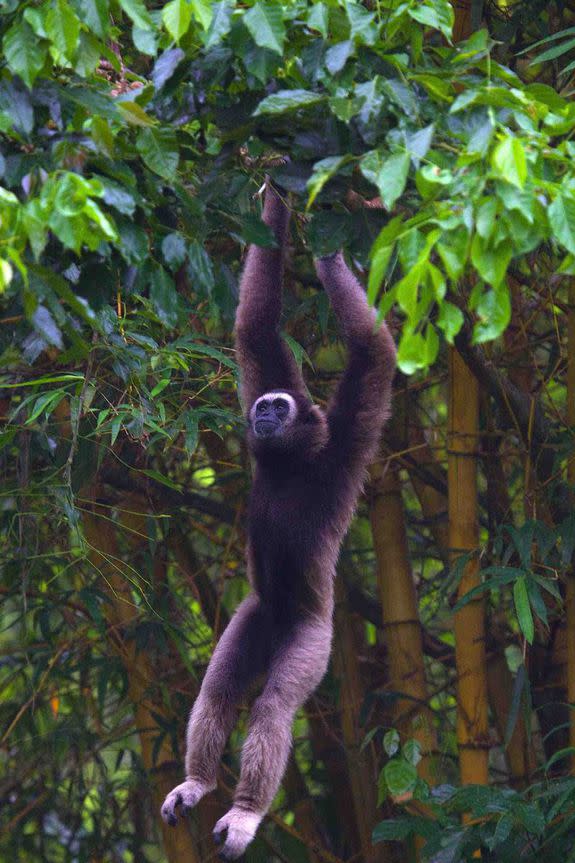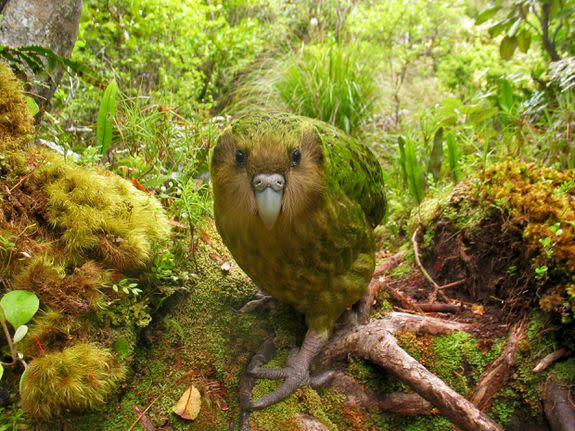Scientists say 'prelude' to the sixth mass extinction is happening right now

When plant and animal species go extinct, it's usually a clear sign that humans have messed up. We've over-hunted, destroyed habitats, polluted waterways, and altered the climate by burning fossil fuels, wiping species off the planet for good.
We tend to study extinctions to understand just how much we have disrupted the planet's ecosystems. But in a new scientific study published on Monday, scientists said we're not paying nearly enough attention to the "prelude" to global extinction — as in, the dwindling population sizes and ranges of existing species that can be a warning sign of a bigger extinction event to come.
SEE ALSO: 800 wildlife species at risk from Trump's 'beautiful' border wall
As with extinctions, these declines have serious consequences for the natural systems we all depend on for clean air and water, food, and shelter.
"This is the case of a biological annihilation occurring globally, even if the species these populations belong to are still present somewhere on Earth," Rodolfo Dirzo, the study's co-author and a biology professor at the Stanford Woods Institute for the Environment, said in a press release.

Image: GERARDO CEBALLOS/UNAM
For their analysis, published in the Proceedings of the National Academy of Sciences, Dirzo and his colleagues mapped the ranges of 27,600 species of birds, amphibians, mammals, and reptiles worldwide. The sample represents nearly half of all known land-based vertebrate species.
Scientists estimated that, of these species, nearly one-third of the vertebrates are declining in population size and range. Shrinking ranges mean animals — especially migratory species — have less room to hunt, breed, and hunker down.
As ranges decline, population numbers also dwindle, pushing a species closer to the edge of extinction.
Tropical regions saw the greatest number of decreasing species, particularly in south and southeast Asia. In Thailand and Myanmar, for instance, illegal hunting and logging of rosewood trees has drastically reduced the population of Indochinese tigers. Indonesia's Sumatran orangutan has lost roughly 60 percent of its habitat as farmers burn and drain swamp forests to produce palm oil.
Temperate regions had similar or higher proportions of decreasing species compared to tropical regions, according to the study.

Image: Shane McInnes/REX/Shutterstock
Dirzo and his co-authors also looked at 177 well-analyzed mammal species and examined population losses between 1990 and 2015. Within this group, all have lost 30 percent or more of their geographic ranges. Some had been hit especially hard: more than 40 percent of the species have lost over 80 percent of their ranges.
"It is a prelude to the disappearance of many more species and the decline of natural systems that make civilization possible," Gerardo Ceballos, the study's lead author and an ecology professor at the National Autonomous University of Mexico, said in the press release.
Monday's research adds to the broader scientific debate about the "sixth extinction" — which is likely happening to the planet right now, and might be the biggest mass extinction since the dinosaurs disappeared 66 million years ago.
During Earth's 4.5-billion-year history, five major extinction events have wiped out nearly all the species on the planet, the geological record shows. Asteroid strikes, volcanic eruptions, and natural climate shifts were likely to blame for those past events.

Image: YOEUNG SUN/WILDLIFE CONSERVATION SOCIETY
However, this sixth mass die-off is largely due to human activities, such as population growth, habitat destruction, pollution, and climate change.
In their paper, Dirzo, Ceballos, and Stanford professor Paul Ehrlich suggested that billions of animal populations that once roamed the Earth are gone. A separate 2016 study by World Wildlife Fund said global populations of vertebrates have declined by 58 percent between 1970 and 2012.
The authors of Monday's paper said their research shows "Earth's sixth mass extinction has proceeded further than most assume." They added that the steep population declines amount to a "massive erosion of the greatest biological diversity" in Earth's history.
WATCH: China's big, beautiful, green 'vertical forests' will suck up toxic smog

